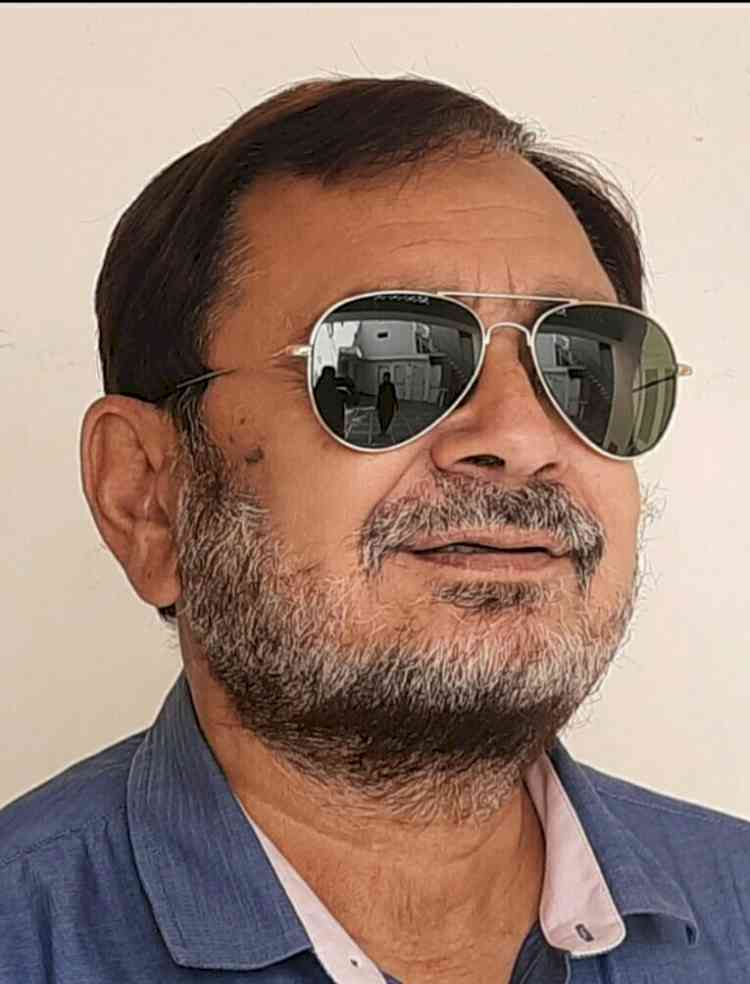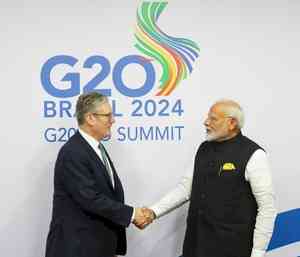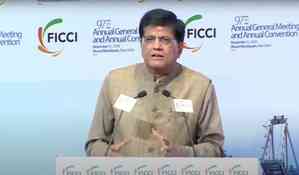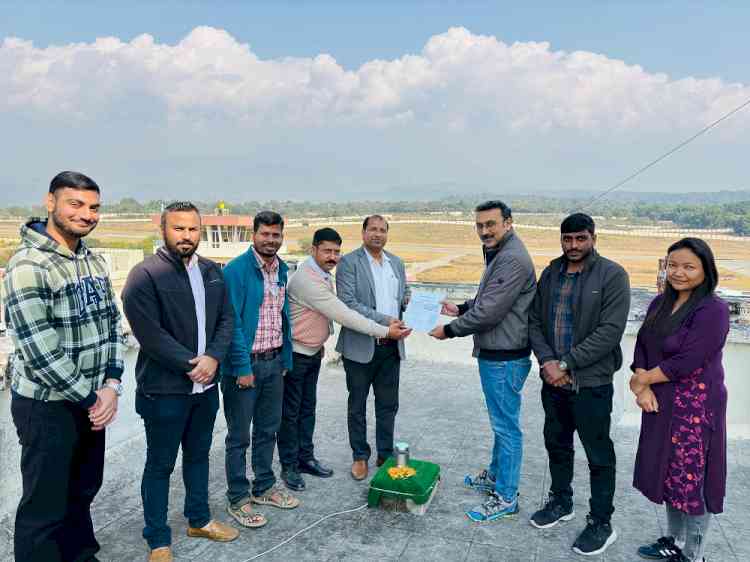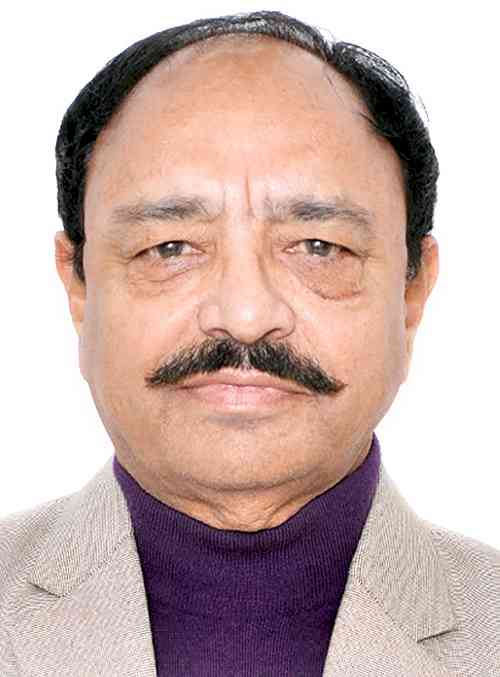Did Kashmir's local media push pro-terror agenda?
'The Kashmir Files' movie which has been dubbed as 'Redeemer' by some and 'Can of Worms' by others, has surely turned the spotlight on the fault lines that this film exposes in its treatment during the period 1989 to the decade of nineties, the vicious time during which the psyche of Kashmiris was to change forever. It is expected that the film will be a subject of thorough study for quite some time.
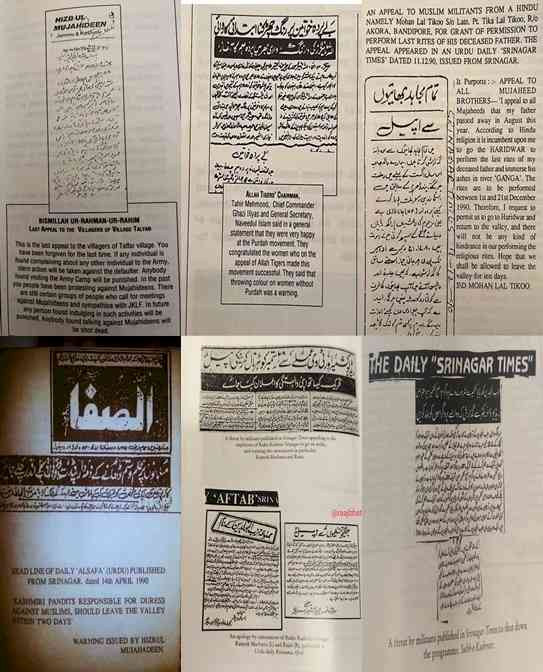
Rajesh Bhat
New Delhi, March 22 (IANS) 'The Kashmir Files' movie which has been dubbed as 'Redeemer' by some and 'Can of Worms' by others, has surely turned the spotlight on the fault lines that this film exposes in its treatment during the period 1989 to the decade of nineties, the vicious time during which the psyche of Kashmiris was to change forever. It is expected that the film will be a subject of thorough study for quite some time.
Indeed, besides the disappointing role of clueless then Central and state governments, the local bureaucracy (a reference to which has been made by not less than Mr. Jagmohan, the then Governor of J&K State in his book My Frozen Turbulence in Kashmir), active participation of the so-called Civil Society, academia in pushing forward the separatist bogey's agenda, the culpability of the local vernacular Press which actively supported and helped in a very partisan manner to carry out the agenda of 'breaking' India, also needs to be scrutinised.
The journalistic ethics, professionalism, the sensitivity in the treatment of news and paramount principle of siding with the facts and to lead a way forward, was turned into dust and ashes. The local press those days shamelessly raised passions and eclipsed the power to discern truth from falsehood and those were the reasons to believe that the media was the stakeholder to push the militant agenda forward to garner a sizeable chunk in the moolah, the terrorist enterprise was offering.
A thorough media study and doctoral research work by this author, a portion of which later published in the shape of a book (Radio Kashmir in Times of Peace and War), will reveal how the information system and news apparatus manipulated itself to be an active participant and toe the line of militant Islam.
Agreed that perceived threats of life were the catalyst, but a counter narrative was never provided. The study of that period, when terrorism was at its peak, reveals hundreds of such instances wherein journalists and editors became the mouthpieces of separatists.
The journalistic ethics being a farfetched idea, even the basic courtesies were not extended. The language at those times became the pamphlet work of agenda seekers.
It started with published appeals of terrorists (in Urdu newspapers like Chattan, Srinagar Times, Aftab, and Alsafa), calling for boycott of Independence Day celebrations on August 15, 1989 and termed it as a 'black day'. Interestingly, people were asked to celebrate August 14 and to hoist Pakistani flags which were easily available in every nook and corner of Kashmir. Threatening was carried out to those who had shunned the path of militancy to join the mainstream. Similarly, action taken against the Editors of two Anantnag Newspapers -- Kashmiryat and Hilal-e-Nav in May 1989 for fabricating certain news with communal overtones was assailed as an attack on 'Freedom of Press'.
Actually, the general perception of the times was that a section of the Press was acting on the behest of militants.
The state government had tried to overcome this problem by enacting Jammu and Kashmir Special Powers (Press) Bill 1989. This gave rise to vehement protests lead by journalists like Kuldip Nayyar. Even former Prime Minister, IK Gujral was seen on a dharna site. The red lines by the Press were already crossed and it never redeemed its credibility afterwards to honour the freedom it enjoyed under Indian Constitution. The press bodies favoured the overall idea of freedom of journalism and this paved the way for activities of this section to give preference to pamphleteering and colouring the overall environment with passions.
Open and barren slogans of Azadi, accompanied by killings and kidnapping of Rubiyya Sayeed, then Union Home Minister Mufti Syed's daughter by Jammu Kashmir Liberation Front was the required fodder and ammunition that the active connivance of this section of press sought to push forward the agenda of separatists. The crisis got compounded by the fact that in the absence of a parallel attractive media agency which would have reflected a counter point highlighting the implications of joining a resistance which by now was increasing by exhibiting Pakistani agenda and manipulation was totally absent.
Barring the seemingly secured and protected inner premises of Radio Kashmir, Srinagar (now rechristened as AIR Srinagar) and Doordarshan Srinagar, which only disseminated government's viewpoint were unfortunately perceived as totally pro-India, which indeed was factually correct. For taking up pro-India stance, both these institutions were on the target of terrorists. It lost its young director, Lassa Kaul besides other killings, abduction and injuries to many artists. Such was the state of affairs that even both Doordarshan and Radio Kashmir had to shift their newsrooms out of Kashmir.
This modus operandi was later extended and repeated with national level news agencies like PTI and UNI, (Tribune, Indian Express and Times of India also) forcing maximum strength of their staff to migrate outside Kashmir. With the working of these institutions getting crippled and local media taking over, it was not Indian Media's finest hour (Crisis and Credibility, Press Council of India, 1991).
As local media began to incline itself more towards militants' cause, the organised campaigns and added content bordering on issuing threats, insinuations, creating communal divide besides brazenly undermining the authority of the state turned out to be a routine phenomenon. On many occasions, the alacrity with which the vernacular press acted as a mouthpiece of terrorists violated the basic commonsense and decency even. For example Alsafa -- a local Urdu newspaper published from Srinagar in its main lead dated April 14, 1990, quoting 'Hizbul Mujahideen' terrorist outfit, issued an open threat to whole Kashmiri Pandit community to leave the valley within two days, terming them responsible for 'duress' against Muslims. The Kashmiri Pandit community had to face the double whammy. They were termed infidels (Kafirs) by terrorists through newspaper statements and at the same time, dubbed as 'Indian agents'.
While newspapers like Chattan (then weekly) or Alsafa were providing oxygen to the militant cause to survive, newspapers like Aftab and Srinagar Times were publishing statements and advertisements of many terrorists and some appeals from common masses, asking militants to pardon them for siding with India or having any kind of political affiliation in past.
Terrorist outfits like Allah Tigers, Muslim United Guerrillas, Ansarnullah, Muslim Janbaz Force etc, through these newspapers were publishing open threats to Kashmiri Pandits. In one such unfortunate turn of events, one Makhan Lal Ticku had to publish an appeal to militants in Srinagar Times dated December 11, 1990 for allowing him to visit Haridwar for completing the last religious ceremonies of his father. Similarly, casual announcers -- Ramesh Marhatta and Rajni, (both Kashmiri Pandits) who were working for Radio Kashmir, were targeted.
Marhatta was even shot at. Both had to publically dissociate themselves from Radio through a series of 'apologies' to militants published in Urdu Roznama Aftab in September 1990.
The larger than life image for militants created by the newspapers and media accentuated the already heated up partisan advantage towards extending a narrative in favour of separatist movement. Unfortunate events of setting fire to vans of Srinagar Times and killing of Alsafa Editor, Shaban Vakil on March 23, 1991 convinced everybody that the local press had to yield and play into the hands of the terrorists.
The instances that have been quoted in the foregoing paras with respect to documentary evidence preserved at that time (Read Radio Kashmir in Times of Peace and War), brings out the point home as to what helplessness the vernacular press reported the news. The reasons are not far to seek. Conflict zones do create such occupational hazards. However, the nadir to which the vernacular press in Kashmir descended during this era needs to be analyzed further and studied keeping in mind the fact that no social media existed that time to add an already accentuated chaotic situation.
Meanwhile, Vivek Ranjan Agnihotri (who missed this aspect) or any other film producer may try their luck on this topic to come out with The Kashmir Files-2.
(Rajesh Bhat is the author of Radio Kashmir in Times of Peace and War. Presently, he is posted in the Policy Division of Directorate General, All India Radio, New Delhi. He can be contacted on [email protected])


 IANS
IANS 
